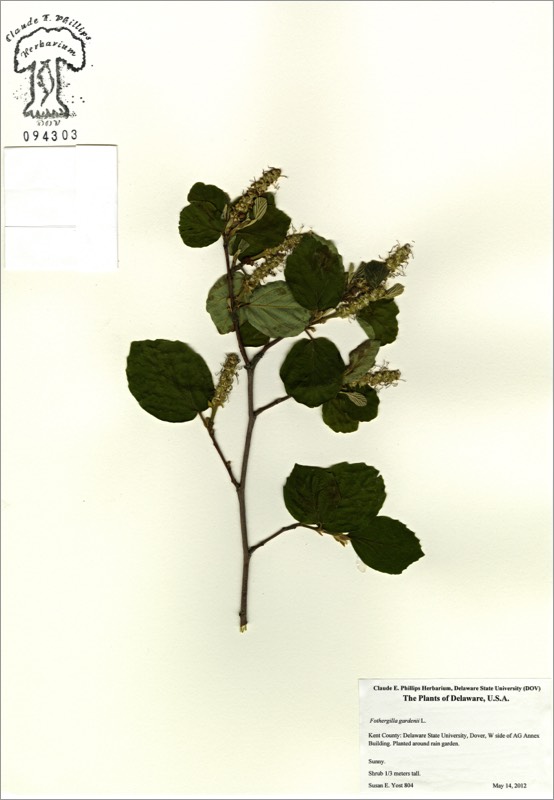*Dwarf witchalder, Fothergilla


*Fothergilla gardenii
DWARF WITCHALDER
Hamamelidaceae
S.E. North America
Location: map coordinates S-9 (west side of Ag Annex Building; on east side of Rain Garden), N 39°11'8'' W 75°32'47''
Planting history: planted with Ag Annex, Human Ecology building, ca 2009.
Description:
*Non-native species (not native to Delaware)
DWARF WITCHALDER
Hamamelidaceae
S.E. North America
Location: map coordinates S-9 (west side of Ag Annex Building; on east side of Rain Garden), N 39°11'8'' W 75°32'47''
Planting history: planted with Ag Annex, Human Ecology building, ca 2009.
Description:
- deciduous shrub
- etymology: Fothergilla after John Fothergill, British physician and botanist (1712-80), who grew North American plants in his garden in England; gardenii for Dr. Alexander Garden (1730-1791), Scottish physician and zoologist, who settled in S. Carolina and discovered and described Fothergilla
- leaves simple, alternate, toothed
- monoecious (separate male and female flowers on the same plant); female flowers inconspicuous, male flowers showy
- flowers white due to conspicuous stamens (petals are lacking), fragrant; in terminal bottlebrush-like clusters; in April to May
- this species compact, mounded, slow-growing
- prefers moist, well-drained soils; subject to winter damage (hardy to zone 5); prefers some shade in hot, dry conditions, but best flowering is in sun
*Non-native species (not native to Delaware)


HIT REFRESH TO START LOCATION GRAPHIC